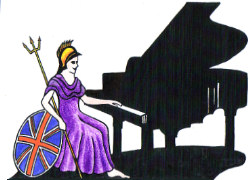Piano Dealers Shops Retailers Selling Pianos,
and Music
Pianos For Sale Robert Morley & Company Ltd., Pianos for Sale UK

UK Piano Page

from Robert Morley & Company Ltd.
Price: £2,888.00
Date: 13-03-2025 03:30PM
Expiration Date: 13-03-2026 03:27PM

878 Carmarthen Road
Swansea, Swansea SA5 8HR
Wales/Cymru
Discover the special nature of a visit to our
5 Leopold Road
Willesden, London NW10 9LN
England
Pianos of London was founded in 1975 by
St. Francis Hall
Baccabox Lane
Birmingham, West Midlands B47 5DD
England
Buying the right piano is often a difficult task,
5 Bridge St
Kettering, Northamptonshire NN14 6EW
England
As a family business, we have specialised in
Rookery Farm
Radstock, Somerset BA3 4UL
England
Abbey Piano Services is run by a small team of
Music Festival for performers and guests Our 10th
18-06-2022 01:30PM
The Morecambe Bay Piano Group was set up to extend
11-12-2021 02:00PM
The Morecambe Bay Piano Group was set up to extend
08-01-2022 02:00PM
The Morecambe Bay Piano Group was set up to extend
12-02-2022 02:00PM
How big are upright pianos
Moden Upright pianos are usually between 110cm – 135cm in height, around 155cm wide and 60cm deep, the height being the major difference between models. You also have the old Mine piano at 70cm these are no longer made.
Upright pianos are popular because of their small footprint compared to a grand piano. While grand pianos may look more attractive, tall upright pianos are capable of producing a strong tone, wide dynamic range and better control in the keys and action than a small upright, Tall Uprights are usually only a few cms deeper and wider than shorter upright piano but will give you a much richer sound a good as most than a small Grands A small modern upright will have weight of 185kg a large one can exceed 235kg